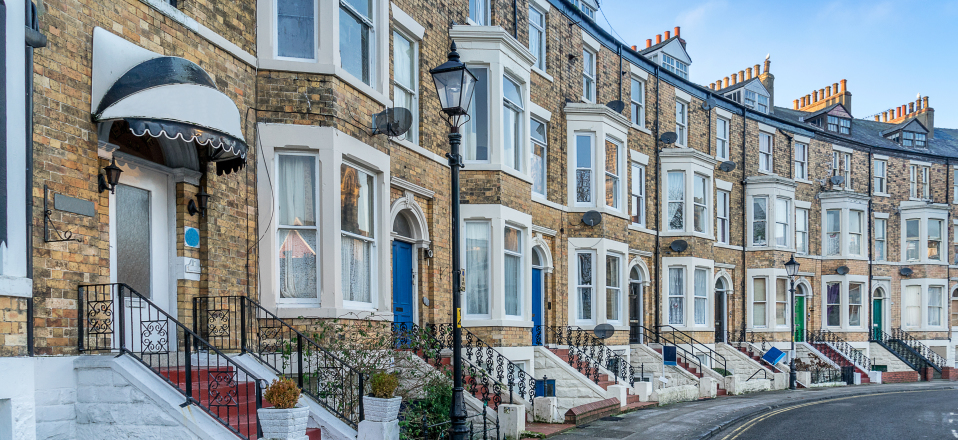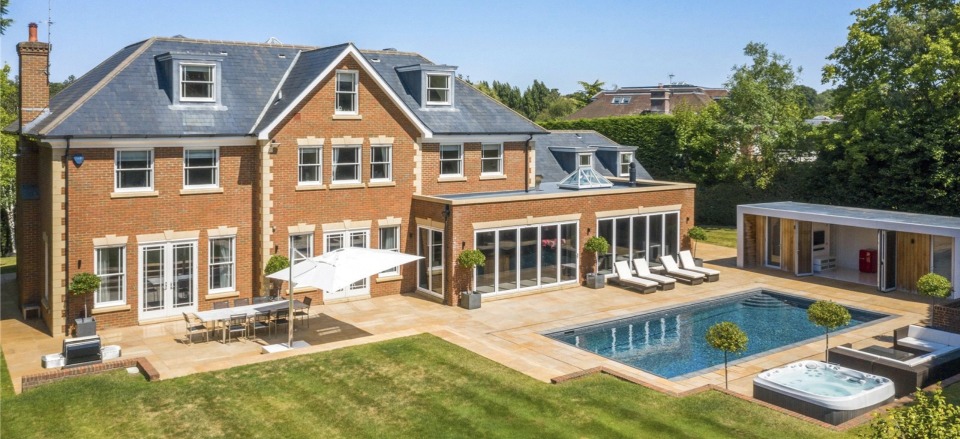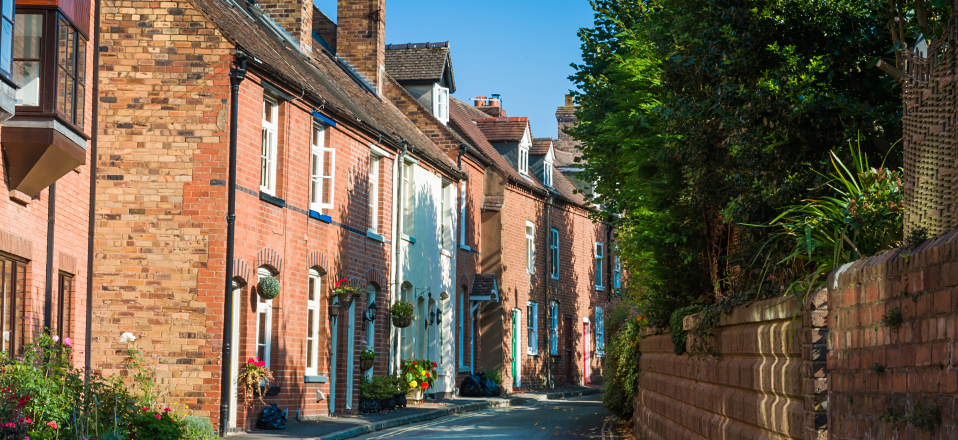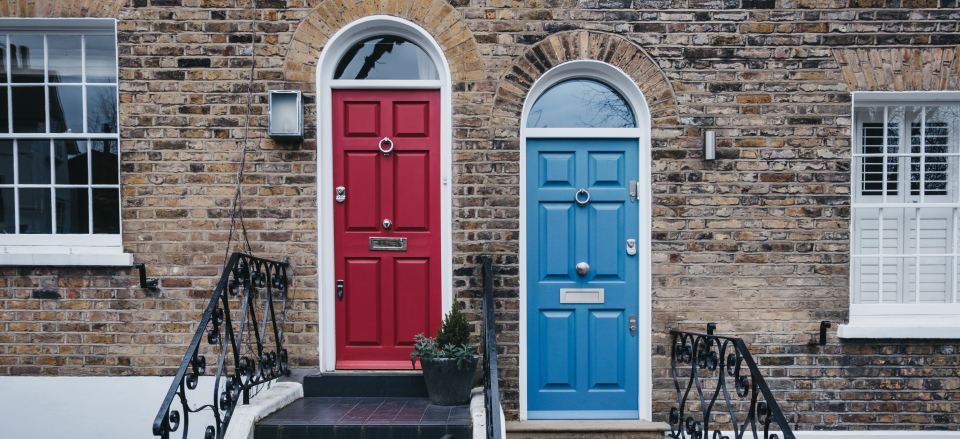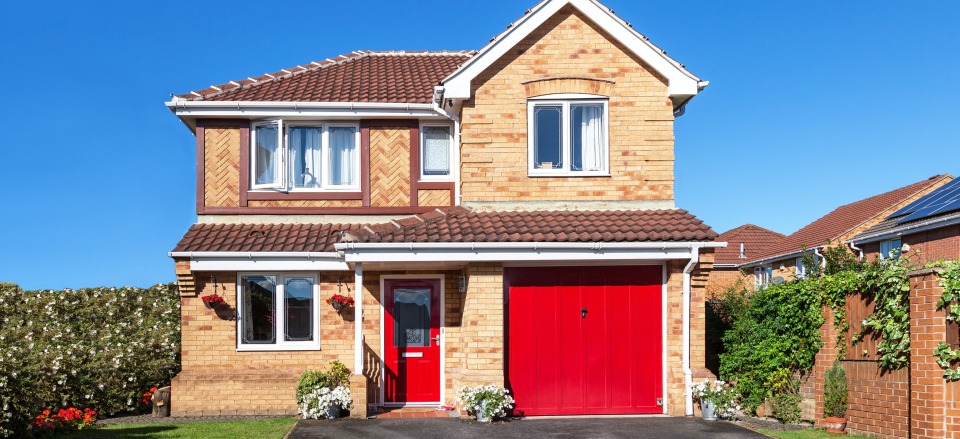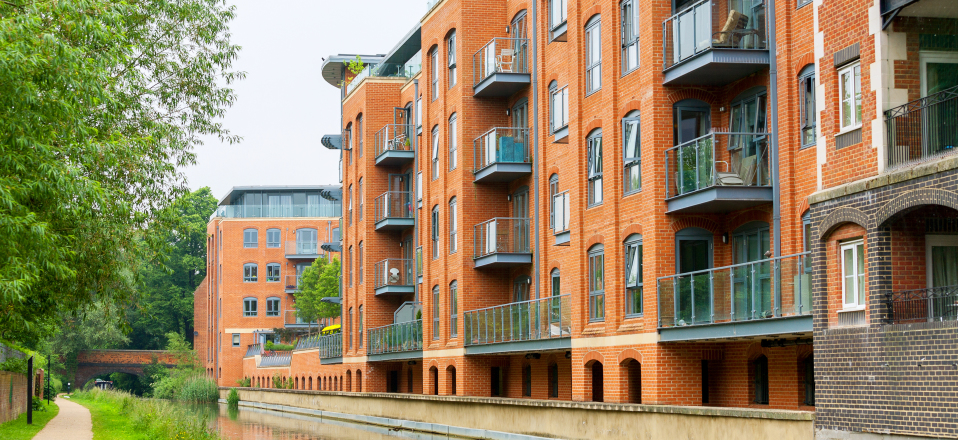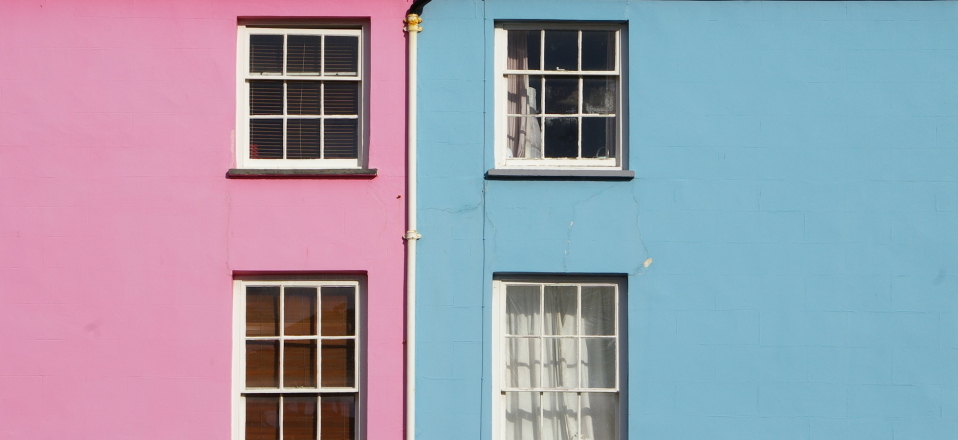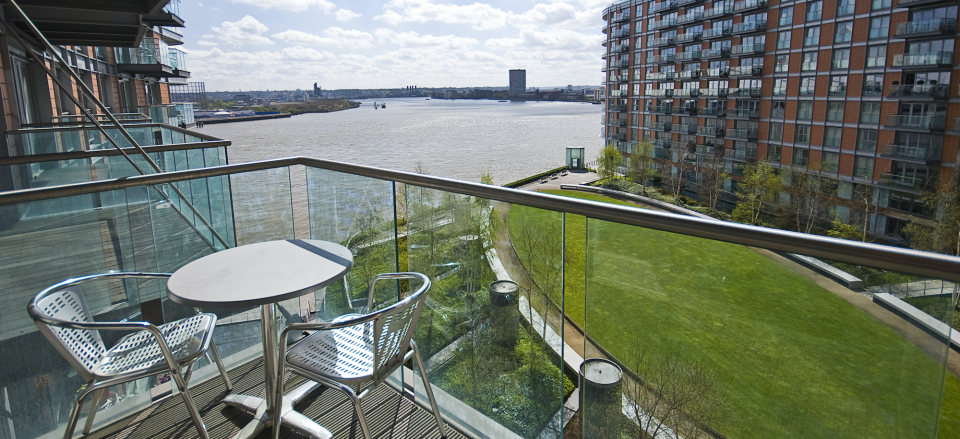Q&A: House price growth is holding steady – but will it last?
Our August 2020 House Price Index revealed prices continued to climb. Our director of research and insight, on what the next few months could have in store.
Q. Why are house prices holding firm against a gloomy economic backdrop?
A. Buyer demand continues to run ahead of the supply of homes for sale, and this imbalance is supporting 2.6% annual growth rate in UK house prices.
Buyer appetite is 39% higher than at this stage last year. Existing homeowners are becoming increasingly active in the housing market, driven by a once-in-a-lifetime re-evaluation of their home and lifestyle as a result of the pandemic. And although first-time buyer appetite has softened a little, it remains well above 2019 levels.
In addition, the government’s stamp duty holiday has fuelled demand, with nine out of 10 buyers paying no stamp duty at all, saving them an average of £4,500.
And let’s not forget there are few forced sellers because the furlough scheme and mortgage payment holidays are supporting homeowners.
However, the impact of Covid-19 is being felt in the rental market in central London in particular.
International and national travel and tourism numbers are down, with London airports operating at reduced capacity. You only have to look at Heathrow Airport’s announcement in August, which reported an 88% plunge in July passenger numbers.
This weaker demand is putting downward pressure on rental growth.
Q. Where are house prices growing the most and why?
A. Our House Price Index shows that the headline growth rate is holding steady at 2.6%.
But at a city level, Nottingham and Manchester are recording annual house price growth of more than 4%, demonstrating the strength of the cities’ local economies and affordability.
There’s a definite strength in cities in northern England and Scotland, with Leeds, Edinburgh, Leicester, Liverpool, Cardiff and Sheffield all registering annual house price growth between 3% and 4%.
Q. The index has revealed that homeowners are set to overtake first-time buyers (FTBs) as the driving force of the housing market. Why is that?
A. Yes, first-time buyers have been the driving force for housing sales over the last decade. They’ve been supported by government initiatives, such as Help to Buy. And they’ve also benefitted from increased availability of higher loan-to-value (LTV) mortgages, as lenders sought to grow this sector in the last three to four years.
But this is set to change as we move into 2021. First-time buyers are now being squeezed by restricted mortgage availability, particularly at high loan-to-values, and growing economic uncertainty, making it harder for them to get onto the housing ladder.
Meanwhile, homeowner appetite to sell up and buy elsewhere is rising as the pandemic forces them to re-evaluate their housing requirements. These buyers tend to be equity-rich, with little or no mortgage, making affordability less of a barrier to moving.
Q. Where are FTBs most likely to be impacted by headwinds in the housing market and why?
A. Weakening first-time buyer demand is being driven in large part by the reduced availability of mortgages at, or over 90% LTV.
But the reliance on high LTV mortgages is not uniform. High LTV lending is most accessible in areas with average or below-average house prices – and so this is where we expect first-time buyer demand to be more affected moving forward.
That’s not to say that London is immune to the effects of reduced LTV lending. And the need for large deposits and a search for space, spurred on by lockdown, may lead to more and more first-time buyers looking outside the capital for their first home.
Q. How will the government’s new restrictions impact the housing market?
A. We’ve already seen how lockdown led to people carrying out a once-in-a-lifetime re-evaluation of their homes and lifestyles, with a focus on prioritising space. And the latest restrictions will continue to support this trend – particularly for those who are more financially secure.
Q. What do you think the rest of the year holds?
A. We’ve seen more homeowners looking to move home – and this has contributed to sales inventory being 10% higher than a year ago. A greater supply of homes for sale increases choice for buyers, weakening competition, and this will in turn keep house price growth in check.
But although demand has been very strong, it is unsustainable. It’s inevitable that demand will slow down.
The level of housing sales this year is set to be 15% lower than in 2019 because the housing market simply cannot make up all the ground lost when it was shut during lockdown.
Q. How is 2021 shaping up for the housing market?
A. There’s typically a three to four month time lag between sales being agreed and completion so today’s deals will run into next year. With buyer demand 39% above the same time period last year, the first few months of 2021 are set to be very busy.
However, the housing market is not immune to wider political issues and economic forces. The continuing Brexit negotiations, the end of the furlough scheme, and the prospect of rising unemployment – these are just some of the factors that will no doubt impact the housing market in the months ahead.
Government pledges 'biggest expansion of homeownership since the 1980s
Here's what you need to know about the Prime Minister's plans to increase the availability of 95% mortgages.
The Prime Minister has promised to help more people get onto the housing ladder through increasing the availability of mortgages for those with small deposits.
In his address to the virtual Conservative Party conference, Boris Johnson said millions of people who could afford a mortgage were prevented from getting onto the property ladder because they could not save the necessary deposit.
In a bid to turn “generation rent into generation buy”, he announced plans for a new scheme to give more people the chance to take out long-term fixed rate mortgages for up to 95% of their home’s value.
On a £200,000 property, this would mean borrowing £190,000 and saving £10,000 to use as a deposit.
Johnson said the government believed it would enable an additional two million people to become homeowners, representing the biggest expansion of homeownership since the 1980s.
Why has Johnson announced the scheme?
The government has already launched a number of initiatives to help more people get onto the property ladder.
But the issue of homeownership has been made more urgent by the coronavirus pandemic and its associated lockdowns.
In the past, 95% mortgages have been widely available, but the majority have been withdrawn by lenders since the pandemic struck.
Addressing the conference, Johnson said millions of people, who were often young, were locked down in rented accommodation which lacked privacy, outside space or an appropriate place in which to work.
He added that while some people were happy to live in a rented home, the majority of people aspired to buy their own place but were prevented from doing so by the need to save a large deposit.
How could it work?
Johnson did not give any further details at the conference about how the scheme would work, or when it would be introduced.
However, if the government is to tempt lenders back into offering small deposit mortgages, it may have to act as a guarantor.
The size of deposit borrowers have is only one part of the equation lenders look at when deciding how much to lend.
They also consider how affordable monthly repayments are once borrowers’ other outgoings are taken into account, both now and if interest rates rise.
And Johnson has suggested in a recent newspaper interview that the government may look at ways for these stress tests to be removed.
Where can first-time buyers turn for help now?
The government already offers a number of schemes to help first-time buyers get onto the property ladder.
Under the Help to Buy equity loan scheme, people can purchase a new-build home with just a 5% deposit, with the government topping this up with a 20% equity loan that is interest-free for five years.
The scheme is currently available to all buyers, but it is due to be relaunched in April 2021 for first-time buyers only.
Other help includes the First Homes scheme, which enables first-time buyers and key workers in England to purchase a new-build home at a 30% discount, and shared ownership, which enables people to purchase a share in a property and pay rent on the part they do not own.
Those aged under 40 who are saving for a deposit can use the Lifetime ISA, under which the government contributes up to £1,000 a year to savers who set aside £4,000 annually towards the purchase of a new home or retirement.
First-time buyers have also benefited from a stamp duty exemption on homes costing up to £300,000, although the chancellor recently announced a stamp duty holiday for all buyers on homes costing up to £500,000 until 31 March 2021.
Top takeaways
- The Prime Minister has promised to increase the availability of mortgages for buyers with small deposits
- The government believes it will enable an additional two million people to buy a property
- Johnson said it would represent the biggest expansion of homeownership since the 1980s
Property rich list 2020: Britain’s most expensive streets revealed
Discover the top 10 priciest streets in London and outside the capital, from Kensington Palace Gardens to Montrose Gardens.
The 10 most expensive streets in Britain can all be found in London, with Kensington Palace Gardens crowned the priciest UK road for the 12th consecutive year.
Houses on the tree-lined avenue cost an average of £35.9m, according to our latest research on the most expensive streets in Britain.
Outside of the capital, the South-east of England dominates, with eight out of the top 10 priciest streets outside of London located in Surrey.
Gráinne Gilmore, Head of Research at Zoopla comments: “Our data shows where housing stock and prime locations converge to create some of the most expensive addresses in the UK. Clusters of expensive homes are not unusual as the cachet of an area starts to create an appeal of its own, which can factor into what a home is really worth.
“London dominates the country's prime property market, but it is being challenged by the South East in terms of the number of million-pound streets, reflecting the rise in demand and pricing seen in this market, as well as its housing stock mix and its geographical size.”
The 10 most expensive streets in London
Kensington Palace Gardens has been the most-expensive street for the past 12 years.
Houses on the gated street dotted with embassies, diplomatic residences and the homes of ultra high net worth individuals will set you back nearly £36m on average.
It is notably adjacent to Kensington Palace, where the Duke and Duchess of Cambridge have an apartment, and the street is home to steel tycoon Lakshmi Mittal and Chelsea football club owner Roman Abramovich.
Our research found that Courtenay Avenue in Highgate, north London was the second-most-expensive street for the second year running, with homes worth £18.6m on average.
There are three new additions to the top 10 this year, in a list that is dominated by addresses in the London Borough of Kensington and Chelsea.
Chelsea’s Mulberry Walk comes in eighth place and has an average asking price of £9.6m. While St Albans Grove in Kensington, appears in ninth place, and has an average property value of £9.5m.
.png)
South-east dominates outside London
Outside of the capital, Surrey takes the crown with eight out of the top 10 priciest streets.
Montrose Gardens, in Leatherhead, is home to the heftiest price tags, with average property values of over £6m.
In second place is Titlarks Hill in Ascot, Berkshire, with an average property value of £5.9m.
Streets in Virginia Water, Surrey - which became the UK’s first “million-pound town” several years ago - feature on the list, taking third place (Virginia Water, average £5.8m), fifth place (North Drive, average £5.24m) and seventh place (Woodlands Road East, average £5m).
.png)
Million-pound streets by region
Regional analysis of the data shows there are now 12,545 streets in the UK with an average property price of £1m - and increase of 30% since 2015.
Of these, 4,707 are found in the South-east of England and 4,523 are in London.
Only 27 can be found in Wales, 57 are in the North-east of England, and 114 in Scotland.
.png)
Priciest streets in the largest counties
The most expensive streets in Britain’s largest counties (calculated by population) have also been revealed.
Montrose Gardens again tops this list, but in second place is Philippines Shaw in the Kent Downs with an average property price of £4.2m.
Dock Lane in Brockenhurst is Hampshire’s most expensive street, with an average property value of £2.4m, and is in third place.
Next on the list is Theydon Road in Epping, Essex - a sought after location due to its countryside feel and proximity to London, with an average property value of £2.4m.
In fifth place is The Avenue in Altrincham in Cheshire, with an average property value of £2.29m. It is Greater Manchester’s most expensive street and known to be popular among Premier League footballers.
Revealed: the buyers that are set to dominate the housing market in 2021
The pandemic is fuelling a reversal of fortunes for first-time buyers and homeowners, according to our latest House Price Index.
First-time buyers are set to be overtaken by homeowners as the driving force of housing sales next year.
Despite a jump in first-time buyer appetite when the English housing market re-opened in mid-May, demand has tapered off over the last two months, according to our latest House Price Index.
Although first-time buyer interest in stepping onto the housing ladder remains well above 2019 levels, it has now settled back to pre-pandemic levels – and is set to soften further into 2021.
Meanwhile, homeowners were slower to respond immediately after lockdown lifted, but their appetite to move house is 37% higher than pre-pandemic levels and a whopping 53% higher than this time last year.
This reversal will take time to feed through in the housing market – but the gap between mortgaged homeowner and first-time buyer activity is likely to widen further into 2021.
Why is first-time buyer appetite starting to lag?
First-time buyers have been the driving force of the housing market over the last decade, bolstered by the government’s Help to Buy scheme and greater availability of high loan-to-value (LTV) mortgages.
And in 2019, first-time buyers overtook mortgaged homeowners as the most dominant buyer in the housing market.
But restricted mortgage availability, tighter lending criteria and growing economic uncertainty as a result of the pandemic are taking their toll on first-time buyer appetite – and their ability to snap up a home.
Is it the same across the UK?
First-time buyer appetite in September has grown the least in London (1.8%), Yorkshire and the Humber (4.8%) and north west England (9.7%) when compared with the first three months of the year.
By comparison, homeowner interest in moving home has jumped 83.5% in Scotland, 66.2% in the east of England and 65.8% in the south east.
Going forward, it is the regions outside southern England where first-time buyer demand is set to be most impacted, reflecting aspiring homeowners' reliance on high loan-to-value mortgages, particularly at or above 90% LTV.
But London, where high loan-to-value loans are limited to buyers on high incomes or with large deposits, is not immune to changes in lending constraints.
And a greater proportion of first-time buyers in London may turn their attention to commuter areas to purchase their first home.
So why are more homeowners interested in moving?
Homeowners have accounted for an increasingly smaller share of housing sales in the last 10 years, as they stayed put and gradually paid off their mortgages.
But they’ve become more active in the housing market since restrictions lifted, fuelled by the search for more space and a once-in-a-lifetime re-evaluation of housing requirements.
With many homeowners having either no mortgage or a small loan, they also have an equity advantage over other buyers, in particular those stepping onto the housing ladder.
In fact, three quarters of homeowners are over 45 years old and more than half are mortgage-free, so they can potentially make the move as cash buyers.
Richard Donnell, research and insight director at Zoopla, said: “A change in the mix of buyers is supporting market conditions with sustained demand from equity-rich homeowners seeking more space and a change in location.
“In contrast, first-time buyer demand is weakening. First-time buyers have been a driving force of housing sales over the last decade.
"They remain a key buyer group but lower availability of higher loan-to-value mortgages and increased movement by existing homeowners means a shift in the mix of buyers into 2021.”
House building levels nosedive 62% during lockdown
The number of homes being built between April and June plunged as work on building sites was suspended.
The coronavirus pandemic led to a 62% fall in the number of new homes being built in England between April and June.
Only 15,950 new-build properties were finished during the three months, the lowest level since records began in 2000, according to the Ministry of Housing, Communities and Local Government.
It follows a 5% drop in building levels during the first three months of the year, which ended a seven-year period in which the number of new properties being built had been steadily increasing.
Brand new properties already sell for a significant premium compared with homes that are being re-sold, and the fall in building levels is likely to put further upward pressure on prices.
Why is this happening?
Work on construction sites was suspended in March when the UK entered lockdown in response to coronavirus.
When work was able to resume, sites opened in phases and builders had to observe social distancing measures, which reduced the speed at which properties could be built.
But with the UK now facing a second wave of coronavirus and employees once again being told to work from home where possible, construction workers have been given permission to continuing working as normal.
Who does it affect?
While the slowdown in building levels is bad news for anyone hoping to buy a new-build home, it has been particularly stressful for people planning to use the government’s Help to Buy initiative, which ends in its current form on 31 March 2021.
In order to qualify for the 20% equity loan, the property being bought through the scheme originally had to have been built by the end of December.
But the government has since extended the deadline for construction until 28 February 2021 to ensure people do not miss out as a result of building delays caused by the pandemic.
The current version of Help to Buy will be replaced by a new scheme, which is limited to first-time buyers, on 1 April 2021.
What’s the background?
A total of 147,180 new homes were built in the year to the end of June, 15% fewer than during the previous 12-month period.
But construction is only one way in which homes are added to the housing stock, with residential properties also created through the conversion of agricultural and industrial buildings, as well as dividing up large houses into smaller units.
Government figures show an overall increase of 243,720 homes in England during the period, at the lower end of the range of between 240,000 and 340,000 new homes that are needed each year to keep pace with demand.
Top three takeaways
- The coronavirus pandemic led to a 62% fall in the number of new homes being built between April and June
- Only 15,950 new-build properties were finished during the three months - the lowest level since records began in 2000
- The deadline for Help to Buy has been extended to ensure people do not miss out as a result of building delays
Mortgage approvals soar to 13-year high
A combination of pent-up demand and the stamp duty holiday pushed home loan approvals up in August.
Mortgage approvals soared to a near 13-year high in August as the scramble to buy homes continued.
The number of mortgages given the green light hit their highest level since October 2007 as a result of pent-up demand following lockdown and the government’s stamp duty holiday.
A total of 84,700 mortgages were approved in August, a 28% increase on the previous month’s total, according to the Bank of England.
David Ross, managing director, Hometrack, said: “Today’s report confirms the bounce back in mortgage approvals for house purchases that Hometrack identified during August. We have seen continued growth in applications during September showing that demand remains high at approximately 30% up on a year ago.
“At the same time, we are seeing signs of softening of demand from first-time buyers with 20% fewer applications for mortgages requiring less than a 15% deposit in September when compared to August.
"This is potentially affected by reducing availability of low deposit mortgages but has been offset by strong demand amongst home movers and higher equity applicants."
Why is this happening?
A number of factors have combined to produce August’s strong figure for mortgage approvals for house purchase.
On the one hand, demand that built up during the weeks that the housing market was closed is continuing to work through the system.
At the same time, lockdown itself has prompted people who were previously happy to stay put to consider moving, after finding their current home did not meet their needs during lockdown.
The government’s stamp duty holiday, under which stamp duty is waived on homes costing up to £500,000 until 21 March 2021, has provided a further boost to the market.
The holiday was announced on 8 July, so August is the first full month for which it is reflected in the figures.
Finally, August is traditionally a quiet month for the property market as people put moving plans on hold while they go on holiday, but with travel restrictions this summer meant many people did not go away, and instead got on with a house purchase.
Who does it affect?
The fact that the housing market is so buoyant is good news all round.
Prior to the coronavirus pandemic, property transaction levels had been held back by a shortage of homes for sale.
The situation created a vicious circle for the housing market, with existing homeowners delaying listing their property because of a lack of choice for their next home.
The current high level of activity in the market indicates this issue has now been overcome.
It is also significant that mortgage approvals for house purchase have reached their highest level since the global financial crisis, as this suggests despite concerns about economic uncertainty and rising unemployment, banks and building societies are still happy to lend on homes.
What’s the background?
The number of mortgages approved for house purchase so far this year is still below the figure for the same period of 2019, suggesting the current boom in demand could have further to run.
A total of 418,000 loans have been approved for people buying a property so far this year, compared with 524,000 in the first eight months of 2019.
But approvals for people remortgaging are less buoyant, with only 33,400 new loans agreed for people switching deals in August, broadly unchanged since July and 36% lower than in February.
Ross added: “With continued uncertainty due to upcoming changes to income support and the effect of ending the stamp duty holiday, volatility will continue in the market.
"Demand is likely to soften, potentially with a demand spike ahead of the end, meaning lenders will need a continued focus on risk.”
Top takeaways
- Mortgage approvals soared to a near 13-year high in August
- A total of 84,700 mortgages were approved during the month - the highest level since October 2007
Cost of moving home drops by nearly 40% - but costs go up for first-time buyers
The government’s stamp duty holiday has driven a steep drop in the costs associated with moving house. But moving costs have risen for first-time buyers.
The cost of moving home has nosedived 39% this year for the majority of movers.
The steep decline can be explained by the stamp duty holiday announced by the government in July, saving buyers an average of more than £4,200.
A typical homemover now spends £6,669 on associated costs, down from £10,911 before the stamp duty holiday was introduced, according to the moving services website reallymoving.com.
The fall in stamp duty costs more than offsets increases in the amount movers paid for other services, such as legal fees, estate agents’ fees, surveys and removals, which have all risen in recent months.
Overall, the cost of moving for an existing homeowner was equivalent to 1.9% of the price of the property they were purchasing, down from 3.6% before the stamp duty holiday.
However, first-time buyers saw the associated cost of moving go up.
Why is this happening?
The stamp duty holiday, which was announced on 8 July and will run until 21 March 2021, saved existing homeowners an average of £5,000.
But legal fees and estate agents’ fees, which are charged as a percentage of a property’s value, both increased as house prices rose.
Estate agents’ fees were 14% more expensive than before the stamp duty holiday was announced at an average of £3,936, while legal fees increased by 15% to £1,682.
There was also a 10% increase in the cost of a survey, raising it to £450, and a 3% rise in removals expenses to £546.
The only cost that was unchanged was the price of an Energy Performance Certificate at £55.
Who does it affect?
Unsurprisingly, moving costs vary significantly across the UK.
London is the most expensive place in which to trade up the property ladder, with the associated costs averaging £12,061, although this total is less than half the £25,255 paid before the stamp duty holiday.
The South East is the second most expensive place in which to move home at £7,457, followed by the South West at £6,640.
At the other end of the scale, moving costs in Northern Ireland average just £4,356, only £1,085 less than before the stamp duty holiday was introduced, while in the North East they are £4,659, a reduction of only £958.
What’s the background?
While existing homeowners saw their moving costs fall, first-time buyers, who were already exempt from paying stamp duty on the first £300,000 of a property purchase, saw their moving costs increase.
The typical first-time buyer now spends an average of £1,795 on the associated costs of moving, 8% more than before the stamp duty holiday was announced.
Moving costs for people purchasing their first home have risen in all regions of the country except London, where they fell from £6,730 to £2,218, and the West Midlands where they dropped by £42 to average £1,520.
Unsurprisingly, London has the highest moving costs for first-time buyers, while Scotland has the lowest at an average of £1,199.
Top three takeaways
-
The cost of moving home has dived by 39% due to the stamp duty holiday, saving buyers an average of more than £4,200
-
The typical person trading up the property ladder now spends £6,669 on associated costs, down from £10,911 before the stamp duty holiday
-
The fall in stamp duty costs more than offset increases in the amount people paid for other services, such as legal fees, estate agents’ fees, surveys and removals.
UK house prices hold firm as new buyers continue to enter the market
New restrictions to control the spread of Covid-19 are set to support buyer appetite in the near-term, according to our House Price Index.
UK house prices continued to climb in August, with the annual growth rate edging up to 2.6%, from 2.5% in July.
It means that the average UK house price is now £218,262, according to our latest House Price Index.
What’s happening to house prices?
Annual house price growth in August ranged from 1.7% in the north east, to 3.3% in the north west, Yorkshire & the Humber, and Wales.
Eight of the 20 cities tracked by our House Price Index had annual house price growth of more than 3%.
Nottingham and Manchester led the pack, with house prices up by more than 4% year-on-year. Only Aberdeen registered a decline.
What’s driving these figures?
A mismatch between buyer appetite and the number of homes for sale is continuing to support house prices.
And as new buyers continue to enter the housing market, the impetus for price rises shows no signs of slowing.
Buyer demand since the start of the year is now 39% higher than the same time spell in 2019, with the pandemic driving much of this, as last month's House Price Index revealed.
The uptick in buyers has also led to more homes coming onto the market, as homeowners look to sell their existing property and buy elsewhere. The supply of homes for sale is now 10% higher than a year ago.
Meanwhile, new sales agreed over the last nine months are 3% higher than the same period last year – even with the closure of the housing markets across the UK during lockdown.
But the three- to four-month lag between sales being agreed and legal completion means that the number of homes sold this year is set to be 15% lower than in 2019, with transactions spilling over into 2021.
Who’s interested in buying right now?
First-time buyer appetite to get onto the housing ladder jumped when the English housing market reopened for business in May after a 50-day shutdown.
However, it has softened over the last two months as growing economic uncertainty and reduced availability of higher loan-to-value mortgages hit first-time buyers.
And while first-time buyer demand remains well above 2019 levels, it is now back in line with pre-pandemic levels.
But existing homeowners are taking up a greater share of home moves. Homeowner appetite to trade up or down the housing ladder is 37% higher than pre-Covid-19 levels and is 53% higher than this time last year.
This in turn is resulting in more homes coming onto the market at a higher price point.
Richard Donnell, research and insight director at Zoopla, said: “A change in the mix of buyers is supporting market conditions with sustained demand from equity rich existing owners seeking more space and a change in location.
“In contrast, first-time buyer demand is weakening. First-time buyers have been a driving force of housing sales over the last decade.
"They remain a key buyer group but lower availability of higher loan-to-value mortgages and increased movement by existing homeowners means a shift in the mix of buyers into 2021.”
What’s in store for the rest of the year and into 2021?
We don’t expect much change in current housing market trends over the rest of the year, although a further softening in buyer demand is likely over the coming months.
Donnell explained: “Housing market conditions remain strong as new restrictions are introduced to control the spread of Covid-19. These changes are likely to continue to support housing demand in the near-term as the importance of the home grows.
“However, the housing market will not remain immune to the impacts of weaker economic growth and rising unemployment.”
Coronavirus hits first-time buyers as mortgage availability for lower deposits falls sharply
1 in 5 first-time buyers has delayed their property purchase, with nearly half of first-timers now worried about their financial security.
irst-time buyers are having to put their moving plans on hold as a result of the impact the coronavirus pandemic has had on mortgage availability and income stability.
Nearly half of people planning to buy their first property say they have had to delay their plans by an average of nearly a year as a result of the pandemic.
One in five first-time buyers has had to pull out of a purchase as a result of lockdown, while 49% saying they are now worried about their financial security, according to mortgage lender Aldermore.
Overall, four out of 10 first-time buyers say the pandemic has made it harder for them to get on to the property ladder, with a similar proportion saying it has made it more stressful.
What’s happening?
First-time buyers looking to get on to the property ladder are facing issues on three fronts:
-
Financial instability
The pandemic and its associated lockdown has hit many people’s income and job stability.
-
Cautious lenders
Mortgage lenders have become more cautious, leading many to pull their range for borrowers with small depositsThere are now no mainstream mortgages for people with only 5% to put down, with only a handful of specialist products remaining which require either a guarantor or that borrowers live in a specific area or work in a certain profession. There are also now only 45 mortgages for people with a 10% deposit.
-
Competition from landlords
Finally, the end of lockdown has led to a steep increase in property transactions, with first-time buyers once again facing competition from investment landlords who are keen to take advantage of the stamp duty holiday.
Why is this happening?
Mortgage lenders have been pulling products across the board as they review their ranges in the light of coronavirus.
The total number of residential mortgages has more than halved since the beginning of March, dropping from 5,222 to 2,338 now, according to financial information group Moneyfacts.
But products aimed at first-time buyers have been particularly hard hit as lenders reassess the level of risk they are prepared to take.
Mortgages for those with only small deposits are generally considered to be higher risk than those for people with a large equity stake in their home, as there is more chance of the borrower ending up in negative equity if house prices fall.
As such, the number of deals for people borrowing 90% of their home’s value has dropped from 779 in early March to just 45 now.
At the same time, lenders have repriced high loan-to-value mortgages.
While the interest charged on the average two-year fixed rate mortgage has increased by 0.1% during the past six months, rates on loans for people borrowing 90% of their home’s value have jumped by nearly 1% to average 3.53%, while the cost of the few remaining 95% loan-to-value deals has risen by 1.48% to 4.74%.
What you can do?
Don’t panic if you are a first-time buyer hoping to get on to the property ladder. There are still steps you can take to increase your chance of getting a mortgage.
-
Increase your deposit
If you have decided to delay your purchase by a few months, take the opportunity to try to save more towards your deposit. Borrowing 85%, rather than 90%, of your property’s value will increase the number of mortgage deals available to you from just 45 to 350.
-
Improve your credit score
You can increase your chances of qualifying for a mortgage by ensuring your credit score is as high as possible. Make the time to review your credit report to ensure it is up to date and accurate, and, if possible, take simple steps to improve it, such as paying off your credit card in full each month and ensuring you settle all of your bills on time.
-
Cut back on your spending
Affordability plays a key role in whether or not lenders approve you for a mortgage. As such, the lower your outgoings are relative to your income, the more chance you will be accepted for a mortgage. Lenders look at between three and six months’ worth of bank statements when assessing mortgage applications, so the sooner you can start cutting back, the better.
-
Use a broker
With deals for first-time buyers currently scarce, using a broker could help you secure a mortgage. Not only will they be able to scour the market on your behalf to find a deal that suits your circumstances, but they will also be able to advise you on which lenders are more likely to approve your application.
-
Ask the Bank of Mum and Dad
With the Bank of England base rate at a new record low, savings aren’t earning much interest at the moment. But interest rates on an 85% loan to value two-year fixed rate mortgage are an average of 0.73% lower than for a 90% one. See if your parents would be prepared to lend you a lump sum to help you qualify for an 85% loan to value mortgage, in exchange for you paying them a higher rate of interest on the money than their bank would.
-
Consider buy-to-let
If you can’t afford to buy in your local area but still want to get on to the property ladder, consider purchasing a property in a cheaper area and renting it out. The Legal & General Mortgage Club has seen an 18% increase in searches for first-time buyers wanting to enter the buy-to-let market since the beginning of September.
Shared ownership scheme overhauled to help first-time buyers
The initial share purchase has been cut by more than half to 10%.
The shared ownership scheme in England is being overhauled to help more people get onto the property ladder.
The government is reducing the minimum initial share people must purchase from 25% to 10%.
Those using the scheme will also be able to purchase additional shares in their property in 1% instalments, with slightly reduced fees. Previously they had to buy in 5% or 10% instalments.
To further boost the affordability of home ownership, landlords of properties in the scheme will cover the cost of any repairs and maintenance for new owners for a 10-year period.
What is shared ownership?
The initiative aims to make buying a home more affordable by enabling people to purchase a share in a home and pay rent on the part they do not own.
A shared owner can gradually increase the amount of the property that they own by purchasing additional shares, known as staircasing, until they own it outright.
These additional shares are purchased at the market price, meaning that if house prices in the area increase or decrease, the value of the remaining shares in the home will reflect that price change.
All shared ownership properties are leasehold, so those living in them also have to pay an annual service charge.
To qualify for shared ownership, you must be a first-time buyer who cannot afford to purchase a property in the traditional way. Your household income must also be less than £80,000 a year.
When you come to sell the property, the housing association has the right to find a buyer for it if you own less than 100%. If you own the property outright, it has the right to buy it back from you, known as first refusal, for up to 21 years after you acquired full ownership.
When do the changes come into effect?
The new model will apply to all new-build shared ownership homes delivered through the new Affordable Homes Programme, which is due to begin in 2021.
The majority of rented homes built under this programme will also come with the right to be part of shared ownership to enable social housing tenants to purchase a stake in their home.
What’s the background?
The shared ownership scheme sits alongside a number of government initiatives to help people purchase a property, including the Help to Buy scheme, Lifetime ISAs and Starter Homes.
The changes to shared ownership are designed to help more young people get onto the housing ladder.
The government says 87% of people would choose to own a property if they could, but the number of those aged under 35 who were homeowners had declined to just 27%, down from 65% in the 1990s.
Top three takeaways
-
Shared ownership is being overhauled to help more people get onto the property ladder
-
The minimum initial share is being reduced to 10% from 25%
-
Those using the scheme will also be able to purchase additional shares in their property in 1% instalments


